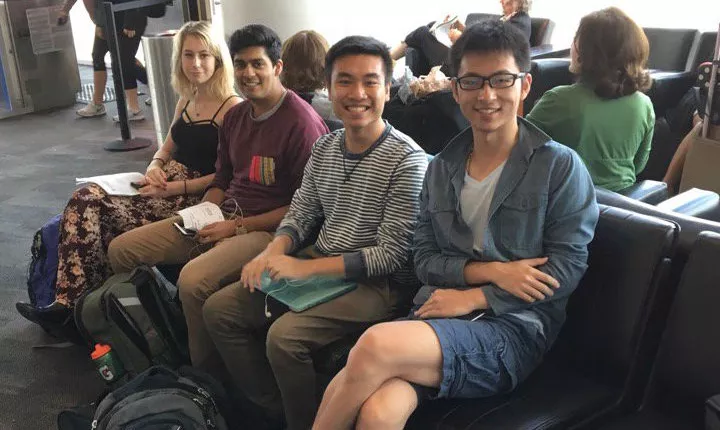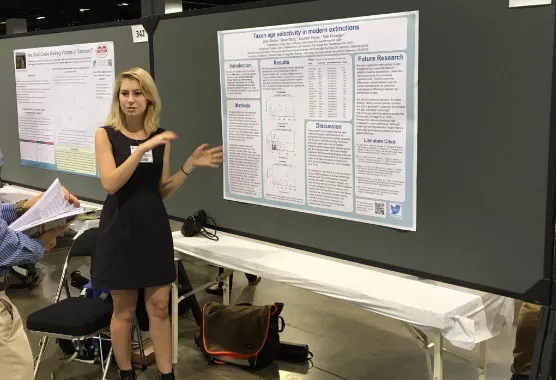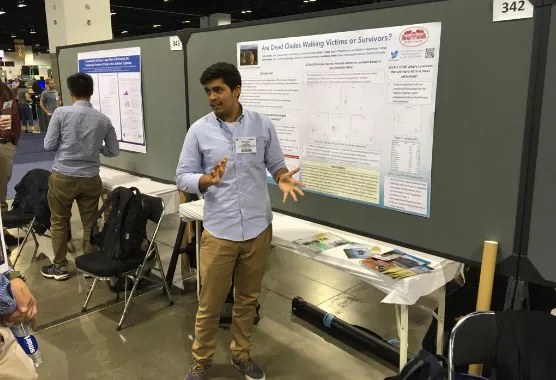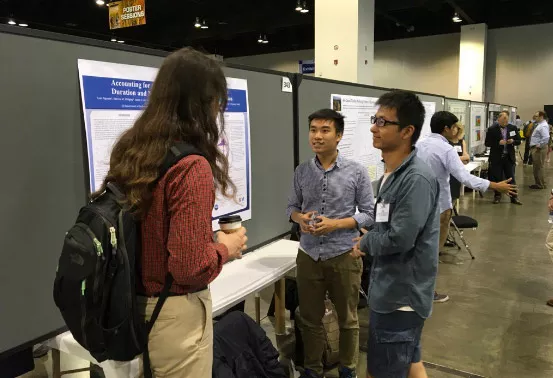The thought of presenting research to the world’s leading geoscientists unnerved Tushar Kundu ’17. But once the Honors economics and mathematics major started speaking with them about his research on the concept of dead clade walking in mass extinction, he felt a kinship.
“It was incredible, and I received tons of helpful feedback for continuing my project,” says Kundu of Alameda, Calif, who collaborated on his research with geologists from Swarthmore, Stanford, and UC Berkeley.
Kundu joined three other Swarthmore students and Professor of Statistics Steve Wang at the annual Geological Society of America (GSA) conference in Denver, Colo., last month. Wang develops statistical methods to study evolution and extinction in the fossil record. With more than 7,000 attendees representing more than 30 disciplines, the conference is the largest in his area of paleontology.
“This is just a great opportunity to learn about new research and have a wide audience to see your work,” says Wang, who brought five students to last year's conference.
Wang worked with Kundu on his research. The conclusion? The dead clade walking taxon is similar to other survivors of, but hit harder by, mass extinction.
Zoey Werbin ‘17, a biology major from Davie, Fla., presented her research on the modern sixth extinction, for which she worked with Wang and scientists from Stanford and the Department of Integrative Biology and Museum of Paleontology at UC Berkeley. The team explored the relationship between the age of a taxon and its extinction risk for modern taxa in the current global extinction, using data from the Paleobiology Database and the International Union for Conservation of Nature Red List.
Tuan Nguyen ’18, a computer science and mathematics major from Hanoi, Vietnam, and Jason Lin ’18, a mathematics and computer science major from Shanghai, China, offered their research on the Cambrian explosion, which explored the details of the duration and pattern of mass origination events. They collaborated with Wang, Katrina Midgley '17, a computer science major from Seattle, Wash., and researchers from the Department of Earth Science, UC Berkeley; Earth Research Institute, University of California; Johns Hopkins University; and Princeton on the project and forged connections with them at the conference.
“It was rewarding to see the smiles on [these researchers’] faces when they felt that we made some sense out of their findings,” says Lin, whose coauthors on the conference poster also included Heather Zhou ’16, Daniel Wang ’17, Linda Gai ’15, and Chengying Wang ’15.
Aside from the opportunity to present their work, the Swarthmore students relished the opportunity to take in some of the more than 4,600 presentations in paleontology and other realms of the geological sciences.
“It was a fantastic experience to see the cutting-edge developments,” says Lin.
Adds Kundu: “Research on on Mars’ composition, in particular, drew my eye.”







